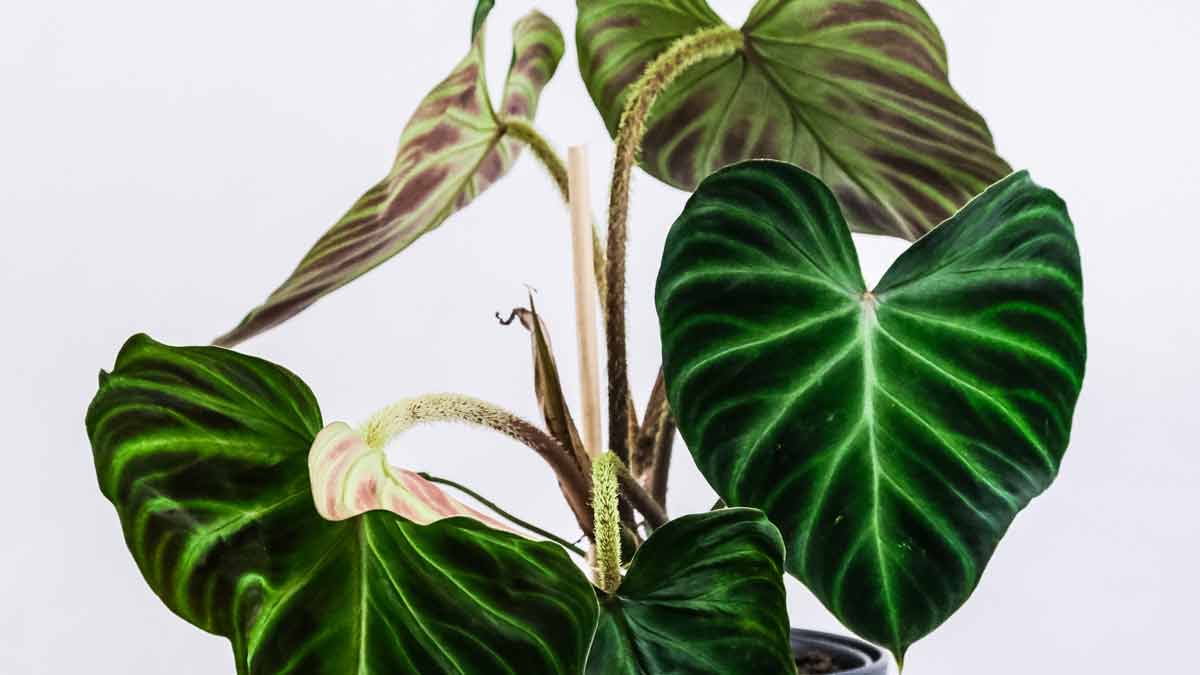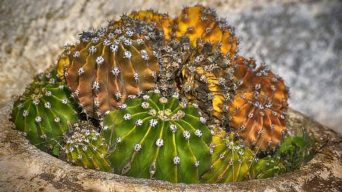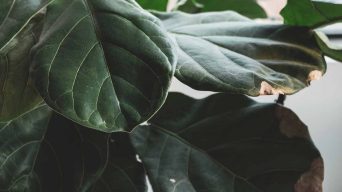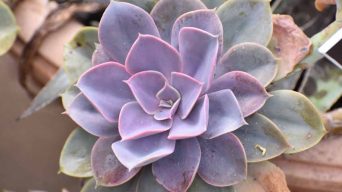Philodendron is a very popular houseplant, and for a good reason! They are easy to care for and can thrive in various environments.
However, like all plants, they are susceptible to sunburn if exposed to too much direct sunlight.
Sunburned philodendron leaves will appear yellow, brown, or black and may be dry and papery to the touch.
The edges of the leaves may be curled or burned, and the plant may drop leaves prematurely.
If your philodendron is sunburned, it is essential to take action quickly to save the plant.
Here you’ll find everything you need to know about sunburned philodendron, including how to identify it, treat it, and prevent it in the future.
What Causes Sunburn on Philodendron Plants?
Sunburn is caused by exposure to too much direct sunlight. This can happen if the plant is placed in a sunny window or outdoors in direct sunlight for too long.
Philodendron plants are native to tropical rainforests, growing under the canopy of taller trees. This means that they are used to filtered sunlight and can be easily burned by direct sun.
When a plant is exposed to too much direct sunlight, the leaves can scorch or burn. The chlorophyll in the leaves is what gives them their green color, and when this is damaged, it causes the leaves to turn yellow, brown, or black.
The edges of the philodendron leaves may also be curled or burned, and the plant may drop leaves prematurely.
In severe cases, sunburn can kill a philodendron plant.
What Does Sunburn Look Like on Philodendron Plants
There are a few things you can look for when trying to determine if your philodendron has a sunburn.
Common Signs of Sunburn on Philodendron
The most well-known telltale sign that your philodendron was in direct sunlight for too long is if its leaves change color.
The philodendron leaves may turn yellow or white, and the edges of the leaves may be brown or black.
Other signs of sunburn include:
- The edges of the leaves may be curled or burned
- The leaves may be dry and papery to the touch
- The upper leaves may be yellow or brown, while the lower leaves are still green
- The plant may drop leaves prematurely
- The plant may be stunted in growth
- The plant may be wilted
- The stem may be discolored
If you see any of these signs on your philodendron, it is essential to take action quickly to save the plant.
Can a Philodendron Recover From Sunburn?
Unfortunately, once a philodendron leaf is sunburned, there is no way to undo the damage.
The best you can do is try to prevent further damage by moving the plant to a shady location and protecting it from direct sunlight.
You may also want to cut off any leaves that are severely sunburned to help the plant conserve energy.
With proper care, your plant should eventually recover from its sunburn and start to produce new leaves.
How Do You Treat a Sunburned Philodendron?
If you think your philodendron has a sunburn, the first thing you should do is move it to a shady location.
This will help prevent further damage to the leaves and give the plant a chance to recover.
You need to cut off any leaves that are severely sunburned to help the plant conserve energy.
Damaged leaves will not recover, but new growth should appear within a few weeks.
Reduce watering until the soil has dried out completely, then water thoroughly and allow the excess moisture to drain away. But be careful not to overwater, as this can also harm the plant.
You also need to cut back on fertilizer until the plant has recovered. Too much fertilizer can scorch the roots, making it even harder for the plant to recover.
Once the plant has recovered, you can slowly start to increase watering and fertilizing as usual.
Be patient and give your plant the care it needs; it should eventually recover from its sunburn.
How To Prevent a Philodendron From Getting Sunburned
Philodendron plants need indirect sunlight or filtered sunlight to thrive.
They need at least four hours of bright light each day, but direct sunlight can be too harsh and damage the leaves.
The best way to prevent sunburn on your philodendron is to avoid exposing it to direct sunlight.
If you live in a sunny climate, it is best to keep your plant indoors or in a shady spot outdoors.
If you must put your plant in direct sunlight, do so gradually, so the leaves have time to adjust.
Move the plant a little closer to the sun each day until it is in its desired location.
You can also use a sheer curtain or shade cloth to filter the sunlight and prevent sunburn.
As tempting as putting your philodendron in direct sunlight, it is essential to avoid doing so to prevent sunburn.
You can keep your plant healthy and avoid damage to its leaves with proper care.
Tips for Growing Philodendron Plants
Philodendron plants are relatively easy to care for, but you should keep a few things in mind to help them thrive.
Here are some tips for growing philodendron plants:
Light
Philodendrons like bright indirect light. If you can provide filtered sunlight for your plant, that would be ideal.
Indoor Philodendron plants can be placed near an east- or west-facing window. This will give them the bright light they need without exposing them to direct sunlight, which can scorch their leaves.
Water
Philodendrons like to be kept moist but not soggy. Allow the top inch or so of soil to dry in between waterings.
When you water your plant, water it thoroughly, so it runs out of the drainage holes at the bottom of the pot.
Use room-temperature water rather than cold water, which can shock the plant.
Fertilizer
Philodendrons are not heavy feeders, so you often don’t need to fertilize them. Once a month during the growing season is sufficient.
Be sure to use a balanced fertilizer that is low in nitrogen. Too much nitrogen can scorch the roots of the plant.
Temperature
Philodendrons like warm temperatures and prefer to be in the range of 60-85 degrees Fahrenheit.
If you live in a cold climate, it is best to keep your plant indoors where it will be warm enough.
Humidity
Philodendrons like high humidity and prefer to be in the range of 60-80%.
If you live in a dry climate, you may need to mist your plant regularly or use a humidifier to raise the humidity level.
Soil
Philodendrons like a well-draining, slightly acidic soil.
You can use a potting mix specifically for tropical plants, or you can make your own by mixing equal parts of peat moss, perlite, and sand.
Pests and Diseases
Philodendrons are relatively resistant to pests and diseases but can sometimes be affected by mealybugs, spider mites, and scale.
If you notice any of these pests on your plant, you can remove them by hand or treat the plant with insecticidal soap.
Philodendrons can also be affected by root rot caused by too much water. Be sure to allow the top inch or so of soil to dry out in between waterings to prevent this from happening.
As with any plant, looking for pests and diseases is essential. However, philodendrons are generally resistant to both.
Final Thoughts
Preventing sunburned philodendron is relatively simple.
All you need to do is provide your plant with filtered light and water it regularly.
If you live in an area with intense sunlight, you may also want to consider placing your plant in a location that receives indirect sunlight.
If your philodendron does become sunburned, don’t despair. There are a few things you can do to help it recover.
- Move your plant to a shadier location.
- Remove any affected leaves.
- Reduce the frequency of watering and fertilizing until your plant has fully recovered.
With care, your sunburned philodendron will return to its old self in no time.







